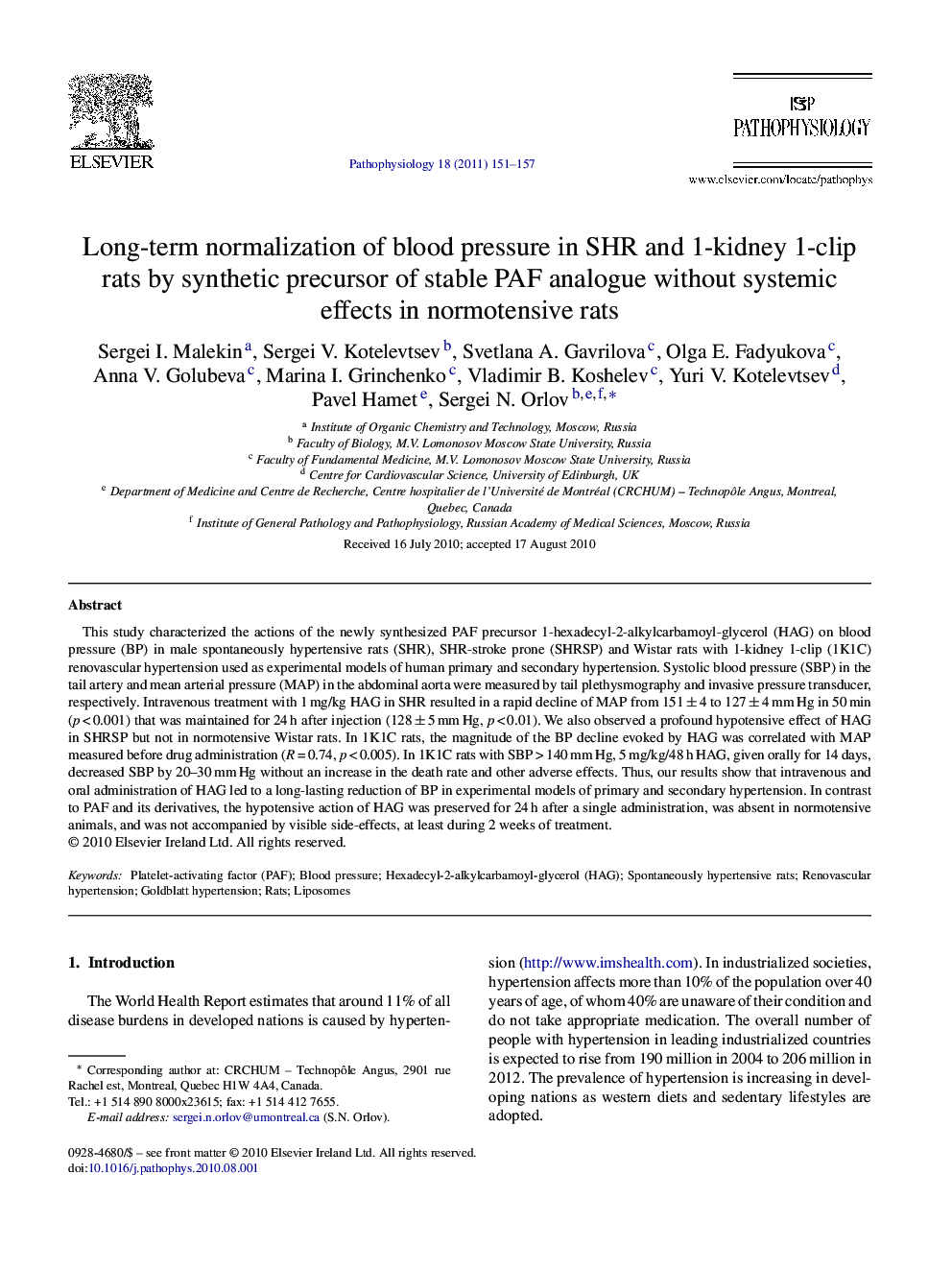| Article ID | Journal | Published Year | Pages | File Type |
|---|---|---|---|---|
| 4137279 | Pathophysiology | 2011 | 7 Pages |
This study characterized the actions of the newly synthesized PAF precursor 1-hexadecyl-2-alkylcarbamoyl-glycerol (HAG) on blood pressure (BP) in male spontaneously hypertensive rats (SHR), SHR-stroke prone (SHRSP) and Wistar rats with 1-kidney 1-clip (1K1C) renovascular hypertension used as experimental models of human primary and secondary hypertension. Systolic blood pressure (SBP) in the tail artery and mean arterial pressure (MAP) in the abdominal aorta were measured by tail plethysmography and invasive pressure transducer, respectively. Intravenous treatment with 1 mg/kg HAG in SHR resulted in a rapid decline of MAP from 151 ± 4 to 127 ± 4 mm Hg in 50 min (p < 0.001) that was maintained for 24 h after injection (128 ± 5 mm Hg, p < 0.01). We also observed a profound hypotensive effect of HAG in SHRSP but not in normotensive Wistar rats. In 1K1C rats, the magnitude of the BP decline evoked by HAG was correlated with MAP measured before drug administration (R = 0.74, p < 0.005). In 1K1C rats with SBP > 140 mm Hg, 5 mg/kg/48 h HAG, given orally for 14 days, decreased SBP by 20–30 mm Hg without an increase in the death rate and other adverse effects. Thus, our results show that intravenous and oral administration of HAG led to a long-lasting reduction of BP in experimental models of primary and secondary hypertension. In contrast to PAF and its derivatives, the hypotensive action of HAG was preserved for 24 h after a single administration, was absent in normotensive animals, and was not accompanied by visible side-effects, at least during 2 weeks of treatment.
